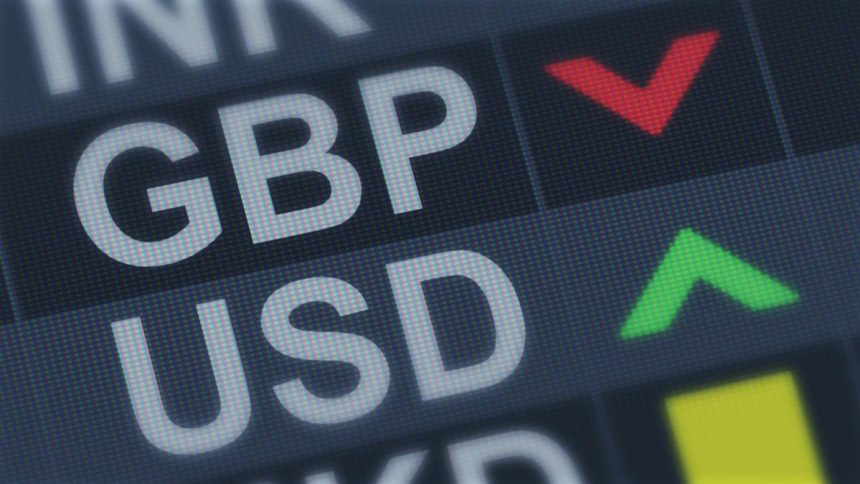Despite the increasing cost of increased interest rates imposed by the Bank of England (BoE). On the United Kingdom’s industrial sector. The Pound Sterling (GBP) has risen over the psychological resistance of 1.3000, extending its five-day winning streak. The GBPUSD pair has had an adrenaline rush as market sentiment has turned unusually upbeat. And the BoE is poised to continue tightening policy despite mounting pressure on the economic outlook.
Firms in the United Kingdom’s Industrial and Manufacturing Production are declining. Are avoiding new credit applications in order to avoid rising interest payments. Subdued manufacturing activity and growing unemployment claims are significant indicators of the Bank of England’s heavy weight of aggressive interest rate rises.
Pound Sterling overlooks dismal manufacturing activity data.
The Office for National Statistics in the United Kingdom revealed a 0.1% decline in monthly Gross Domestic Product (GDP) numbers for May, compared to the consensus of a 0.3% contraction. Monthly GDP increased by 0.2% in April.
Monthly Industrial Production unexpectedly decreased by 0.6%, compared to predictions of 0.4% contractions and a preceding report of -0.2%. Annualized GDP figures have been consistent with estimates of a 2.3% decrease.
Manufacturing Production has performed better than expected, but it is still in a contraction phase. This economic situation The indicator was reported at -0.2%, compared to predictions of -0.5% and the previous publication of -0.1%. Furthermore, yearly results remained significantly higher than expected but lower than the prior figure.
The BoE’s rising interest rates are putting pressure on the UK’s industrial sector.
The impact of the Bank of England’s increasing interest rates is obvious in the industrial sector.
This week’s jobs report from the United Kingdom was full of surprises. The three-month unemployment rate increased to 4.0%, above expectations and the previous announcement of 3.8%.
Jobless claims increased by 25.7K in June, following a 22.5K decrease in May. As businesses declined new loans to avoid high-interest rate commitments.
The Bank of England (BoE) became concerned. After three-month average earnings excluding bonuses (May) remained at 7.3%. Despite investors expecting a drop to 7.0%. Consistent wage pressures were sufficient to overcome. The labor market report’s cooling and maintained the likelihood of policy tightening continuing strong.
The Royal Institution of Chartered Surveyors (RICS) in the United Kingdom revealed that fresh buyer queries for the property had slowed significantly. Higher commercial bank borrowing rates in a highly inflated economy make the real estate industry vulnerable.
In a news conference on Wednesday, Bank of England Governor Andrew Bailey stated, “The UK economy and financial system have so far been resilient to interest rate risk,” according to Reuters.
The Bank of England has already hiked interest rates to 5%, and financial markets estimate rates to peak at roughly 6.5%.
Market attitude is particularly positive when inflation rises. The pace of economic growth in the United States has slowed much beyond predictions. The monthly headline and core Consumer Price Index (CPI) increased at a mild 0.2% percent.
Minneapolis Federal Reserve (Fed) Bank President Neel Kashkari stated, “Policy rates must be raised further, and supervisors must ensure that banks are ready to conduct new high-inflation stress tests to identify at-risk banks and size individual capital shortfalls.”
According to the CME Fedwatch tool, investors are anticipating that the interest rate rise in July will be the final nail in the coffin this year.
The US Dollar Index (DXY) has dropped below 100.50 as a result of surprisingly low inflation, which has dampened worries of a US recession.
Technical Outlook
The pound sterling appears to be strong enough to last. above the psychological resistance of 1.3000. The Cable’s gain stems from a vertical sell-off in the US Dollar Index following the lackluster inflation news.
The Cable has extended its five-day winning streak and is edging closer to the top half of the Rising Channel chart pattern in preparation for a strong breakout. Short-to-long-term daily Exponential Moving Averages (DEMAs) are trending higher, showing a strong upward bias.
Investors should wait for a corrective move before establishing new long positions, as the present market posture results in an unfavorable risk-reward ratio.









